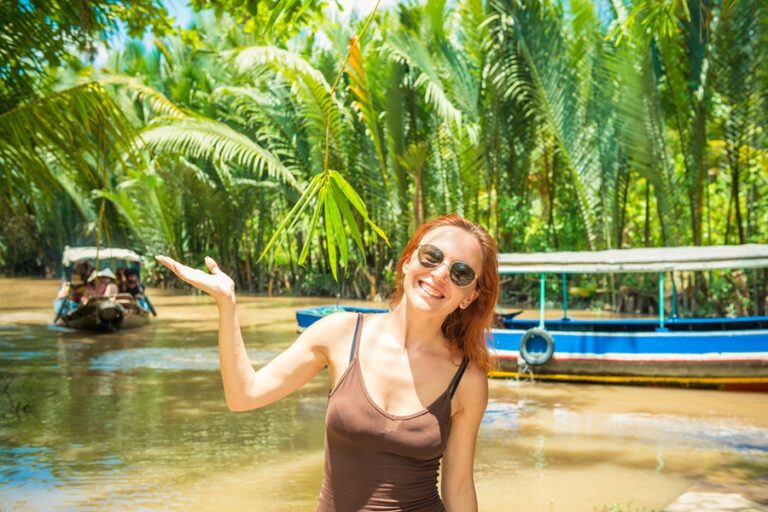By the time the pandemic ends, the day of opting for vacations on renowned attractions will be over. The post-COVID-19 travel trends have varied as fiercely as the way the CORONA virus has changed our world for the last two years.
1. Domestic tourism
Due to the complicated situation caused by the pandemic, many tourists have become more careful in choosing travel destinations. The concept of vacationers lounging on the beach thousands of miles from home seems like a faraway memory. Today, they prioritize domestic travel and opt for local attractions.
Foreign travel options are limited as lots of people in different countries haven’t received the vaccine yet. Moreover, severe restrictions in immigration and social distance are still in place in almost all nations with the hope of preventing the disease from spreading.
During the COVID-19-related travel conditions, those places, close to home and accessible, are considered as the best options for tourists, especially independent travelers.
2. Travel in small groups
Multi-generational groups of friends and relatives have become more and more popular. Tourists are still seeking the opportunity to have a trip together after having spent so much of the last year apart.
It might be because of the long isolation period that travelers find traveling alone less meaningful. If we can travel with beloved ones, we can create unique memories. That makes it so worthwhile.
Traveling in small groups also lowers the risk of spreading the virus. This type of travel is proper in this situation as restrictions are still imposed in lots of places. Furthermore, in the act of traveling in groups, tourists could save a good amount of travel expenses.
3. Blending two worlds into one: Work and Travel
People have got used to distance working since the pandemic occurred. They work from home and work from anywhere. The idea of blending those two worlds – work and travel – into one emerges as a new travel trend in the post-COVID-19 era.
Travelers are preferring opting for a private vacation with stunning, calm, and inspiring backdrops. As a result, they will have longer stays while still keeping their work on schedule.
4. Gravitating toward natural experiences
People appreciate nature and wildlife much more this year. Rural tourism will probably be decisive in this new era. Post-COVID-19 travel trends are shifting to natural areas which still remain intact with a variety of majestic sceneries instead of man-made tourist attractions.
The tendency of ecological travel enables the development of outdoor activities including hiking, cycling, and diving. After a long time of “lockdown fatigue”, people are much more demanding on physical activities. Therefore, travel lovers tend to choose to experience adventurous challenges when they have an opportunity to travel again.
Possibly owing to the pandemic that people acknowledge their finite life and appreciate their health more. People who would never have considered themselves outdoorsy before are now excited to seek physically adventurous activities.
5. Safety first
Post-COVID-19 tourism is a safe and conscious travel era. Tourists are spending more time researching their trips before booking. They seriously consider the travel expenses and make it more proper.
Travelers have a preference for travel companies with transparent cancellation/refund policies. Thus, they want more flexibility to change dates without being charged when considering booking accommodation services.
Smart and conscious travel is on the rise. Tourists’ expectations are higher not only on the experiences that enhance their physical and mental health, but also on hygiene issues at travel spots. For instance, they prefer a homestay placing antibacterial and sanitizing products in every room to ones having nothing.
Understandably, tourists have concerned more about travel insurance options. They also tend to choose destinations where medical facilities are well-equipped or more than 70% of people are fully vaccinated.
6. Travel at a slow pace
No rush is another trend of traveling in the post-COVID era. In this “new normal” period, tourism significantly emphasizes the quality of the trip, not the quantity of attractions.
The idea of continuously traveling here and there in the rush is over. Travelers wish for spending a longer time on one travel destination, for a month or maybe more, to explore its cultural specificities.
Another typical change is in the habit of using local vehicles at the destinations. Tourists opt for going back and forth by bicycle or going on foot between their homestays and the travel areas with the aim of encountering the locals and discovering culinary backgrounds, habits, and customs of those places.
7. Human-oriented tourism
Tourism in this new era focuses more on providing better services and satisfying tourists’ demands rather than creating tourist spots.
After the pandemic, the world of traveling is likely to be much slower and meaningful. It is less about what you see and more about how you feel and experience things.
Travelers have higher expectations on a trip. It should possibly enhance their personal skills or at least improve their physical and mental health conditions.
As the vaccination programs roll out, we can hope for traveling again at some point in the foreseeing future. For now, keep yourself safe and be ready to catch up with the new travel trends when the situation gets better.
